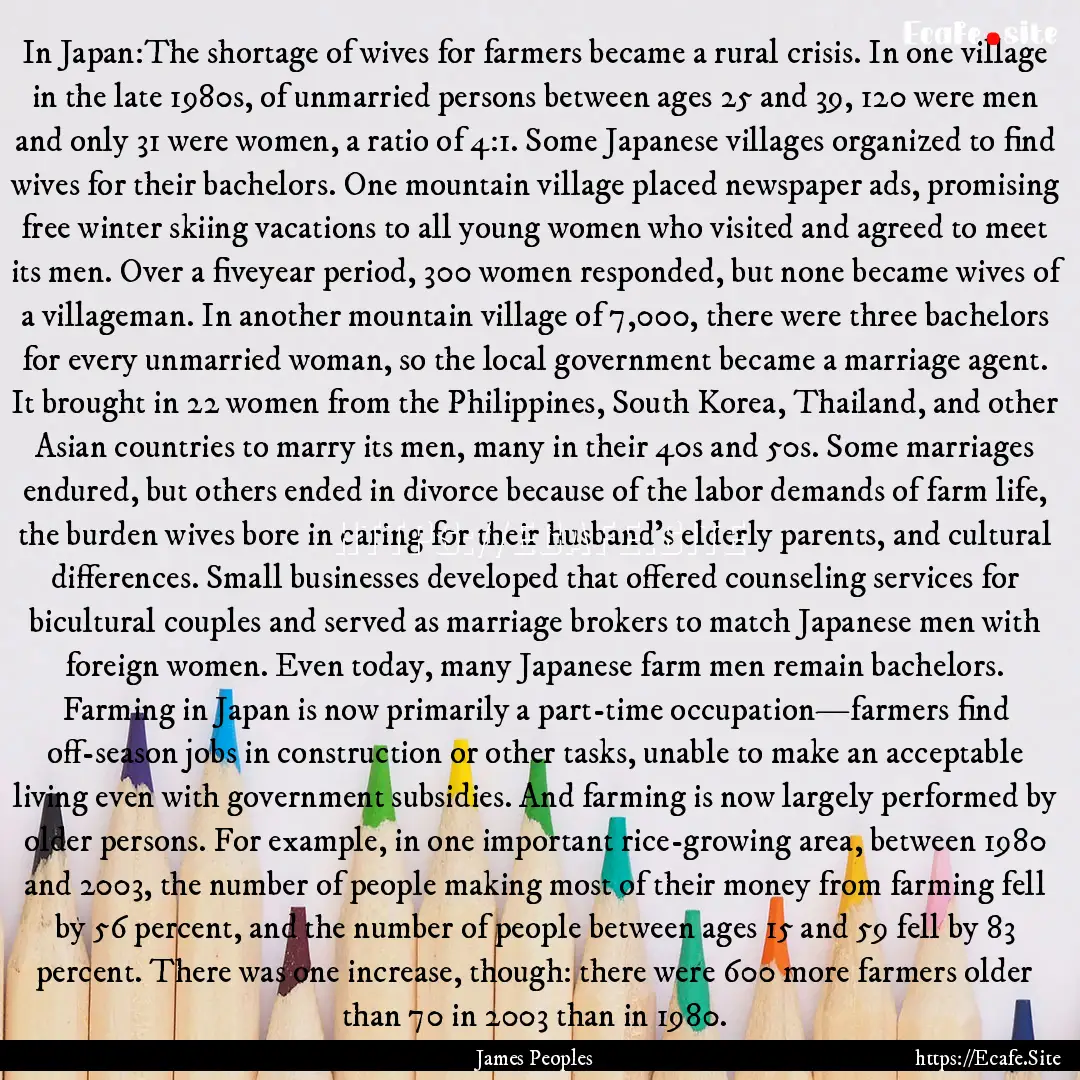
Report, if you have a problem with this page“ In Japan:The shortage of wives for farmers became a rural crisis. In one village in the late 1980s, of unmarried persons between ages 25 and 39, 120 were men and only 31 were women, a ratio of 4:1. Some Japanese villages organized to find wives for their bachelors. One mountain village placed newspaper ads, promising free winter skiing vacations to all young women who visited and agreed to meet its men. Over a fiveyear period, 300 women responded, but none became wives of a villageman. In another mountain village of 7,000, there were three bachelors for every unmarried woman, so the local government became a marriage agent. It brought in 22 women from the Philippines, South Korea, Thailand, and other Asian countries to marry its men, many in their 40s and 50s. Some marriages endured, but others ended in divorce because of the labor demands of farm life, the burden wives bore in caring for their husband’s elderly parents, and cultural differences. Small businesses developed that offered counseling services for bicultural couples and served as marriage brokers to match Japanese men with foreign women. Even today, many Japanese farm men remain bachelors. Farming in Japan is now primarily a part-time occupation—farmers find off-season jobs in construction or other tasks, unable to make an acceptable living even with government subsidies. And farming is now largely performed by older persons. For example, in one important rice-growing area, between 1980 and 2003, the number of people making most of their money from farming fell by 56 percent, and the number of people between ages 15 and 59 fell by 83 percent. There was one increase, though: there were 600 more farmers older than 70 in 2003 than in 1980. ”

James Peoples
From : Humanity: An Introduction to Cultural Anthropology



